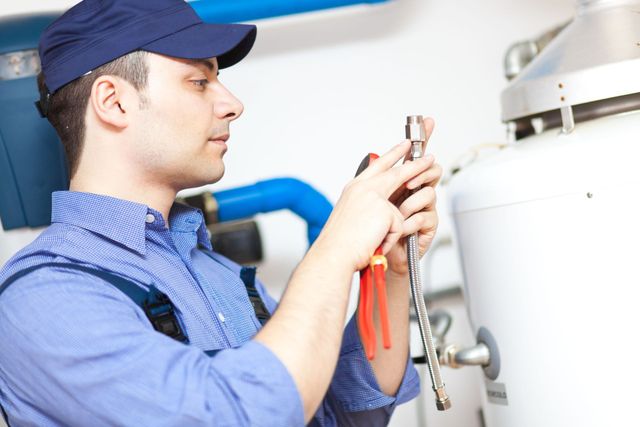Useful Strategies for Maintaining Your Home's Hot Water System
Useful Strategies for Maintaining Your Home's Hot Water System
Blog Article
In this article down the page you might get a lot of superb insight in relation to Tips For Maintaining Your Hot Water Heater.

Warm water is crucial for day-to-day convenience, whether it's for a refreshing shower or washing dishes. To ensure your warm water system runs effectively and lasts longer, regular maintenance is crucial. This article gives practical suggestions and understandings on exactly how to maintain your home's hot water system to stay clear of disturbances and pricey repairs.
Intro
Keeping your home's warm water system may seem complicated, however with a couple of easy actions, you can ensure it operates efficiently for several years ahead. This overview covers everything from comprehending your warm water system to DIY upkeep suggestions and recognizing when to call professional assistance.
Relevance of Keeping Your Warm Water System
Regular upkeep not only extends the lifespan of your warm water system yet also ensures it operates efficiently. Disregarding maintenance can bring about reduced performance, higher energy costs, and even premature failure of the system.
Signs Your Hot Water System Needs Maintenance
Knowing when your hot water system requires focus can protect against significant problems. Look out for indicators such as inconsistent water temperature, weird noises from the heater, or rustic water.
Comprehending Your Hot Water System
Before diving right into upkeep tasks, it's practical to comprehend the fundamental parts of your warm water system. Generally, this includes the hot water heater itself, pipelines, anode poles, and temperature controls.
Month-to-month Maintenance Tasks
Regular regular monthly checks can help capture minor issues before they escalate.
Purging the Hot Water Heater
Flushing your hot water heater removes sediment accumulation, enhancing effectiveness and lengthening its life.
Checking and Changing Anode Rods
Anode rods protect against deterioration inside the storage tank. Evaluating and replacing them when worn is critical.
Evaluating and Adjusting Temperature Level Settings
Readjusting the temperature settings ensures optimum performance and safety.
DIY Tips for Maintenance
You can carry out several upkeep jobs yourself to maintain your hot water system in top condition.
Checking for Leaks
Consistently evaluate pipes and links for leaks, as these can lead to water damages and higher bills.
Examining Pressure Alleviation Valves
Checking the pressure safety valve guarantees it operates correctly and stops extreme stress buildup.
Insulating Pipes
Insulating hot water pipes lowers warmth loss and can save energy.
When to Call a Professional
While do it yourself maintenance is helpful, some problems need specialist experience.
Complex Problems Needing Specialist Assistance
Instances consist of significant leaks, electric issues, or if your water heater is consistently underperforming.
Regular Professional Maintenance Benefits
Expert maintenance can consist of complete inspections, tune-ups, and making sure conformity with security requirements.
Final thought
Routine maintenance of your home's warm water system is necessary for effectiveness, longevity, and price savings. By following these ideas and understanding when to look for professional assistance, you can guarantee a reputable supply of hot water without unanticipated disruptions.
How to Maintain an Instant Hot Water Heater
Before tinkering with your hot water heater, make sure that it’s not powered on. You also have to turn off the main circuit breaker and shut off the main gas line to prevent accidents. Also turn off the water valves connected to your unit to prevent water from flowing into and out of the appliance. 2. When you’re done, you have to detach the purge valves’ caps. These look like the letter “T†and are situated on either side of the water valves. Doing so will release any pressure that has accumulated inside the valves while at the same time avoid hot water from shooting out and burning your skin. 3. When the purge valves’ caps are removed, you have to connect your hosing lines to the valves. Your unit should have come with three hoses but if it didn’t, you can purchase these things from any hardware or home repair shops. You can also get them from retail stores that sell water heating systems. Read the user’s manual and follow it to complete this task properly. When the hosing lines are connected, open the purge port’s valves. 4. You should never use harsh chemical cleaners or solutions when cleaning your unit. Make use of white vinegar instead. It should be undiluted and you’ll probably use about 2 gallons. 5. Now flush your water heater. This task should probably take about 40 minutes. We can’t give you specific directions for this because the procedure is carried out depending on the type, model and brand of your heater. With that being said, refer to the user’s manual. 6. When you’re done draining the unit, you have to turn off the purge port valves again. Remove the hosing lines that you earlier installed on each of the water valves. Put the valve caps (purge port) back in their respective places and be very careful so as not to damage the rubber discs that are found inside these caps. 7. Now that everything’s back in place, check your user’s manual again to find out how to reactivate your water heating system. 8. Once it is working, turn one of your hot water faucets on just to let air pass through the heater’s water supply pipes. Leave the tap on until water flows smoothly out of it. https://www.orrplumbing.com/blog/2014/september/how-to-maintain-an-instant-hot-water-heater/

Do you really like reading up on How to Maintain Your Water Heater & Prolong its Life? Make a review down below. We'd be happy to see your ideas about this page. Hoping that you come back again later on. Liked our piece? Please share it. Help other people locate it. I treasure reading our article about What Kind of Maintenance Do Water Heaters Need?.
Check It Out Report this page